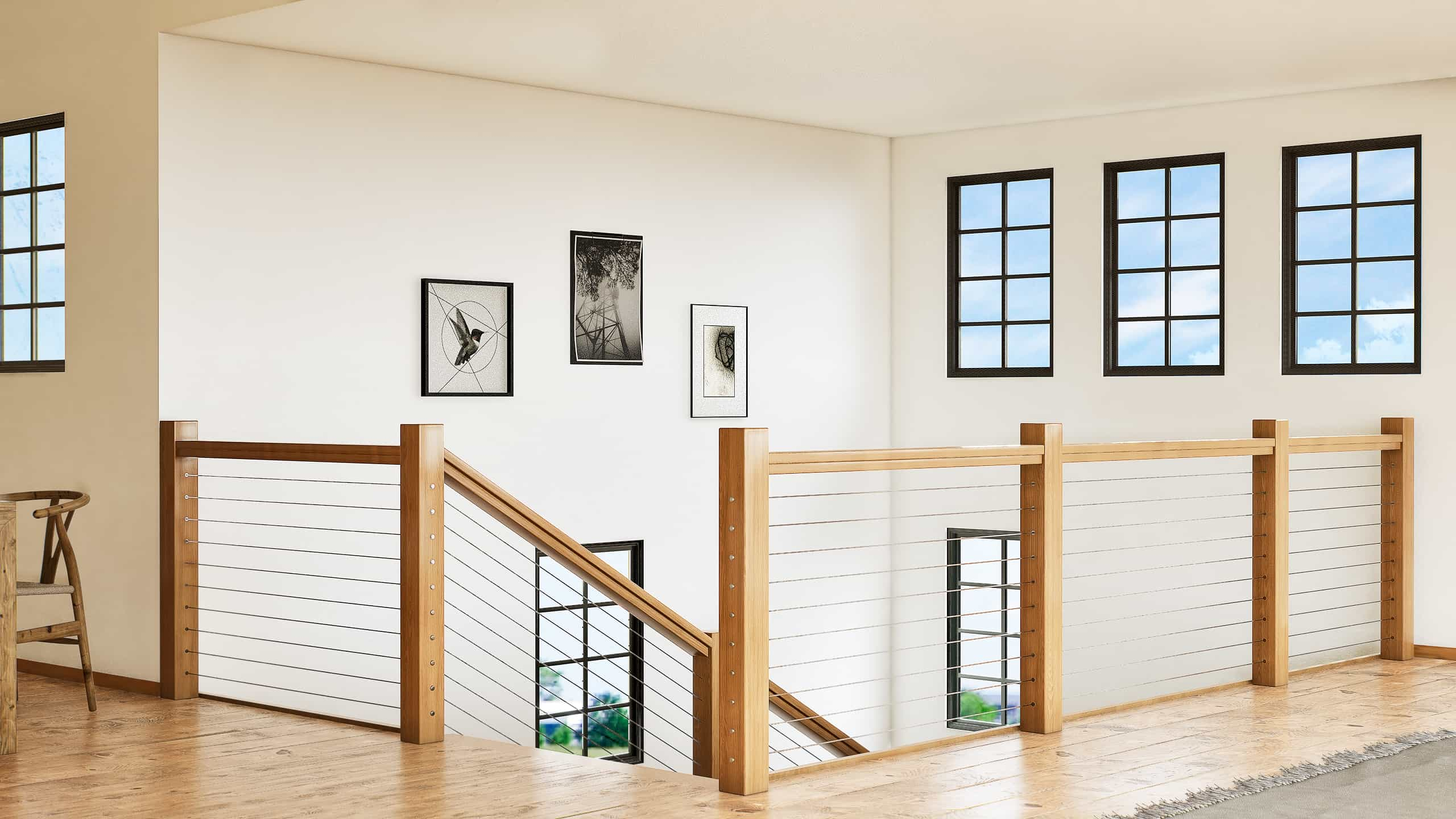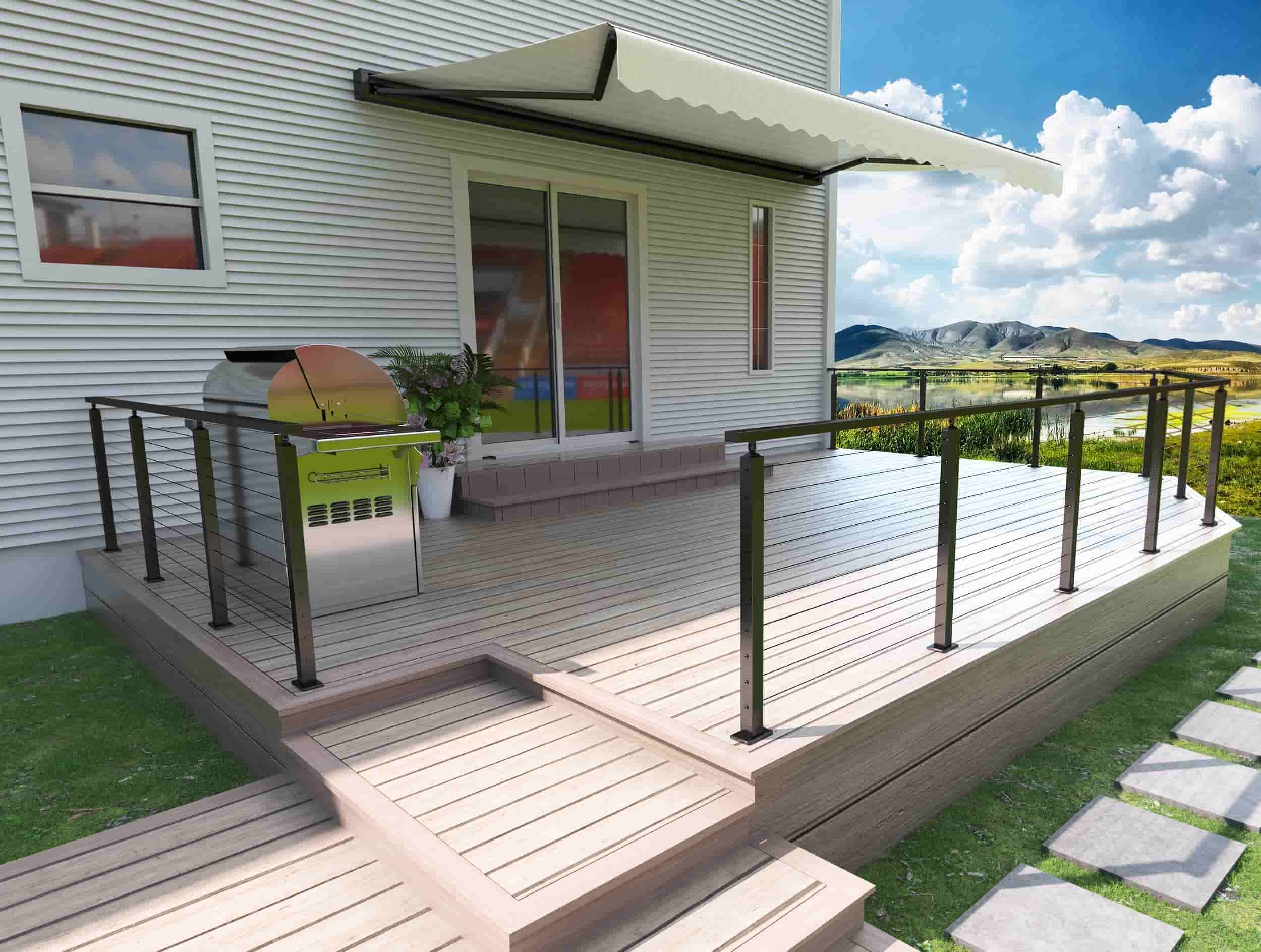How To Fix Your Cable Rail When It Comes Loose?
Cable railing has become increasingly popular in modern homes and businesses due to its sleek appearance, unobstructed views, and low maintenance requirements. However, like any other architectural feature, cable railing is not immune to problems. One of the most common issues homeowners face is loose cables, which can compromise the stability and safety of the railing. If you've noticed that your cable railing has begun to sag or feels less secure than it once did, don't worry! In this article, we'll guide you through the process of identifying the problem, gathering the necessary tools and materials, and fixing your loose cable railing step by step. We'll also share some preventive maintenance tips to keep your cable railing in top condition and help you determine when it's best to call in a professional.

Common Causes of Cable Rail Loosening
Before you begin fixing your loose cable railing, it's essential to identify the problem and its potential causes. The most obvious sign that your cable rail is loose is visible sagging or deflection of the cables. You may also notice that the railing feels less sturdy when you lean against it or that the cables move more than they should when you run your hand along them.
Several factors can contribute to loose cable railing:
- Improper installation: If the cables were not tensioned correctly during installation or if the end fittings were not secured properly, the cables may loosen over time.
- Normal wear and tear: As with any frequently used component of your home, cable railing can experience wear and tear. Constant pressure on the cables, as well as regular expansion and contraction due to temperature changes, can cause them to loosen gradually.
- Environmental factors: Exposure to harsh weather conditions, such as strong winds, heavy rain, or extreme temperature fluctuations, can also contribute to loose cable railing. Additionally, if your cable railing is located near a salt-water environment, the salt air can accelerate the corrosion and degradation of the components.
By identifying the signs and potential causes of your loose cable railing, you'll be better equipped to address the issue effectively.
Essential Tools for Fixing Your Loose Cable Rail
Before you start fixing your loose cable railing, it's important to gather all the necessary tools and materials. This will ensure that you have everything you need on hand and can complete the repair process efficiently.
Essential tools:
- Cable cutter: A cable cutter is designed to cleanly cut through the cable without fraying the ends. It's important to use a cutter specifically designed for your type of cable to ensure a clean, precise cut.
- Cable crimp tool: This tool is used to secure the cable crimps onto the cable ends, creating a strong and permanent hold.
- Wrench or socket set: You'll need a wrench or socket set to tighten and secure the cable end fittings and adjustment nuts.
- Pliers: Pliers will come in handy for gripping and pulling the cable during the repair process.
- Tension gauge (if available): A tension gauge is a specialized tool that measures the tension of your cable railing. While not essential, it can help you achieve the optimal tension for your railing,
Materials:
- Replacement cable (if needed): If your cable is severely damaged or frayed, you may need to replace it entirely. Make sure to purchase a cable that is compatible with your railing system and meets local building codes.
- Cable crimps: Cable crimps are small metal sleeves that secure the cable ends and prevent them from fraying. Make sure to choose crimps that are compatible with your cable size and material.
- Tension adjustment nuts: These nuts are used to adjust the tension of your cable railing. They are typically located at one end of the cable run and can be tightened or loosened as needed.
Having these tools and materials on hand will make the repair process smoother and more efficient, allowing you to fix your loose cable railing with confidence.
Step-by-Step Guide to Fixing Loose Cable Railing
Now that you have identified the problem and gathered the necessary tools and materials, it's time to fix your loose cable railing. Follow these step-by-step instructions to ensure a successful repair.
1. Checking and adjusting cable tension
- Begin by checking the tension of your cables. If you have a tension gauge, use it to measure the tension and compare it to the manufacturer's recommended settings. If you don't have a gauge, you can check the tension by hand. The cables should feel tight and have minimal deflection when you apply pressure.
- If the tension is low, locate the adjustment nuts at one end of the cable run. Using a wrench or socket set, gradually tighten the nuts until you achieve the desired tension. Be careful not to over-tighten the cables, as this can cause damage or put excess strain on the end fittings.
2. Replacing damaged or frayed cables
- If your cable is damaged or frayed, it's best to replace it entirely. Start by removing the old cable from the end fittings. You may need to loosen the adjustment nuts and remove any cable crimps.
- Measure the length of the new cable needed, allowing for some extra length to accommodate tensioning. Use a cable cutter to cut the new cable to the appropriate length.
- Thread the new cable through the end fittings and secure it using cable crimps. Use a cable crimp tool to ensure a tight, secure hold. Once the cable is in place, re-tension it using the adjustment nuts as described in step 1.
3. Tightening and securing cable end fittings
- Locate the cable end fittings, which are typically found at the top or bottom of your posts.
- Using a wrench or socket set, tighten any loose end fittings. Be sure to hold the fitting securely as you tighten it to avoid damaging the post or the cable.
By following these steps, you should be able to successfully fix your loose cable railing. Remember to work carefully and methodically, and always prioritize safety.

How to Protect Your Cable Rail from the Elements
While knowing how to fix loose cable railing is important, it's equally crucial to take preventive measures to keep your railing in top condition. Regular maintenance can help extend the life of your cable railing and prevent issues from arising in the first place.
1. Regular inspection of cable railing: Make a habit of inspecting your cable railing regularly, ideally at least once a month. Check for signs of wear and tear, such as fraying cables, loose-end fittings, or corrosion. Address any issues promptly to prevent them from worsening over time.
2. Cleaning and lubricating components: Keep your cable railing clean by periodically wiping it down with a soft cloth and mild detergent solution. This will help remove dirt, grime, and salt deposits that can accumulate on the surface. After cleaning, consider applying a light lubricant to the cables and end fittings to reduce friction and prevent corrosion.
3. Protecting cable railing from environmental factors: If your cable railing is exposed to harsh environmental conditions, take steps to protect it. For example, if you live in a coastal area with high salt content in the air, consider applying a protective coating to your railing to prevent corrosion. In areas with extreme temperature fluctuations, ensure that your cable railing has room to expand and contract without putting excess strain on the components.
By following these preventive maintenance tips, you can help ensure that your cable railing remains safe, secure, and beautiful for years to come. Regular care and attention can go a long way in minimizing the need for repairs and extending the life of your railing system.
When to Seek Professional Help for Your Cable Rail
While many loose cable railing issues can be fixed with a little know-how and the right tools, there are situations where it's best to call in a professional. Knowing when to tackle the problem yourself and when to seek expert help can save you time, money, and potential headaches in the long run.
1. Situations where DIY fixes may not be sufficient
- If you're unsure about any aspect of the repair process or don't feel confident in your ability to fix the issue safely, it's always best to call a professional.
- If the damage to your cable railing is extensive or involves structural components, such as posts or frames, it's likely beyond the scope of a simple DIY fix. In these cases, a professional can assess the damage and recommend the best course of action.
- If you need to repair your cable railing and it's still under warranty, please refrain from fixing it on your own as this might invalidate the warranty. It is advisable to contact the manufacturer or the installer for guidance prior to addressing any issues. Muzata, with their 30 years of experience in manufacturing cable railings, stands by to offer quality products and expert service. For professional support, please reach out to Muzata using the following contact details:
○Email: support@muzata.com
○Phone: 888-680-8850 (Toll-Free) Available at Mon.-Fri. 06:00-24:00 (PST)
○Engaging with Muzata will ensure that your warranty remains intact and that any repairs are handled correctly.
2. Benefits of hiring a professional for complex repairs
- Professional cable railing technicians have the experience, knowledge, and tools to diagnose and fix even the most complex issues quickly and efficiently.
- They can ensure that all repairs are carried out to the highest standards and in compliance with local building codes and safety regulations.
- In many cases, professional repairs may be covered by your railing system's warranty or your home insurance policy, saving you money in the long run.
While it's empowering to be able to fix loose cable railing yourself, it's equally important to recognize when a problem is beyond your skill level. Don't hesitate to call in a professional when needed to ensure the safety, longevity, and performance of your cable railing system.

Enjoying Your Beautiful, Secure Cable Rail for Years to Come
A cable railing is a stylish and functional addition to any home or business, but like any architectural feature, it requires regular maintenance and occasional repairs. By understanding how to identify and fix loose cable railing, you can keep your railing system safe, secure, and looking its best.
By following the guidance provided in this article and staying proactive with your cable railing maintenance, you can enjoy the beauty and benefits of your railing system with peace of mind. Remember, a little care and attention go a long way in keeping your cable railing in top condition and enhancing the safety and aesthetic appeal of your property.
Frequently Asked Questions
Q1: How often should I check my cable railing for signs of wear and tear?
A: It's recommended to inspect your cable railing at least once every three months to identify any potential issues early on.
Q2: Can I use any type of lubricant on my cable railing?
A: No, it's important to use a lubricant specifically designed for cable railing systems to avoid damage and ensure optimal performance. The frequency of cleaning will depend on the environment – monthly in harsh conditions and less often in more controlled settings.
Q3: How do I know if my cable railing needs to be replaced rather than repaired?
A: If the damage to your cable railing is extensive, such as severely corroded components or bent frames, it may be more cost-effective to replace the entire system rather than attempt repairs.
Q4: Can I mix and match components from different cable railing manufacturers?
A: It's not recommended to mix and match components from different manufacturers, as they may not be compatible and could compromise the safety and performance of your railing system.
Q5: Can I paint my cable railing to match my home's aesthetic?
A: While it's possible to paint cable railing, it's important to use paint specifically designed for metal surfaces and to follow the manufacturer's recommendations to avoid damaging the components or voiding your warranty.
Q6: How much does it typically cost to have a professional repair a loose cable railing?
A: The cost of professional cable railing repairs can vary depending on the extent of the damage, the complexity of the repair, and your location. On average, expect to pay between $100 and $500 for minor repairs and up to $1,000 or more for more extensive work.
Q7: Can loose cable railing be a safety hazard?
A: Yes, loose cable railing can pose a serious safety risk, as it may not provide the necessary support and stability to prevent falls or accidents. It's crucial to address any issues with your cable railing promptly to ensure the safety of anyone using it.

Custom Design Solutions - Fast and Free
Our experts can do all the planning, designing, and budgeting work for you without extra charge.
●Customized Design
●Shopping List
●Budget
